mNo edit summary Tag: Visual edit |
No edit summary Tag: Visual edit |
||
| Line 6: | Line 6: | ||
=== '''Col. Andrejs Zeibārts''' === |
=== '''Col. Andrejs Zeibārts''' === |
||
| − | A Zemessardze (Latvian National Guard) colonel who commaded the 4th National Guard Brigade in the defense of Riga during the early days of the Great War, preventing a Russian airborne assault from securing a beachhead in or near the city. While their valiant effort did not prevent the Russian paratroopers from securing several LZs, much of the city still remained firmly in Latvian hands, and with the bulk of the Russian forces in the East failing to achieve the desired rapid breakthrough, the Russian troops instead resorted to arming the local pro-Russian sympathizers who composed almost a quarter of Riga's population in order to divert the defenders' attention. Although the local Russians were nowhere near as interested to take up arms against their compatriots as the Russian command had hoped, Russia's pre-war efforts to rile up dormant ethnic tensions did have their effect. The plan to quickly arm a militia of collaborators led by sleeper agents infiltrated before the war, however, quickly backfired as a significant portion of the newly-armed Russian militias showed little interest in fighting for their suppliers and simply used their newfound weapons to indiscriminately commit various crimes. That said, the chaos they caused was sufficient to overwhelm the capabilities of Zeibārts' men, forcing them into isolated sections of Riga where they fortified themselves to await NATO reinforcements. Although the armed gangs were briefly forced underground as NATO allies arrived, they would emerge again after the bombs fell. With the gangs, rogue elements of the military and masses of starving civilians turning on each other, Riga descended into anarchy for good, forcing the remaining guardsmen to evacuate the city entirely, seizing control of Riga hydroelectric plant some 20 kilometers southeast of the city. The heavily-built structure and its power-generation capabilities provided a reliable shelter, a safe-zone being established in the nearby city of Salaspils. The same power supply allowed Zeibārts to exert at least a modicum of control upon Riga as well, ensuring that the gangs and rogue militias in control of Riga wouldn't at least openly attack his forces or communities under his protection - should all else fail, Zeibārts had threatened to blow up the hydroelectric dam and drown downtown Riga under two meters of raging water, also having the means to make good on his threats. Only a joint campaign between 4th NG Brigade, USMC 8th Marine Regiment and elements of 1st Land Forces Brigade in 2058 would reestablish law and order in Riga and suppress the gangs for good. |
+ | A Zemessardze (Latvian National Guard) colonel who commaded the 4th National Guard Brigade in the defense of Riga during the early days of the [[Great War]], preventing a Russian airborne assault from securing a beachhead in or near the city. While their valiant effort did not prevent the Russian paratroopers from securing several LZs, much of the city still remained firmly in Latvian hands, and with the bulk of the Russian forces in the East failing to achieve the desired rapid breakthrough, the Russian troops instead resorted to arming the local pro-Russian sympathizers who composed almost a quarter of Riga's population in order to divert the defenders' attention. Although the local Russians were nowhere near as interested to take up arms against their compatriots as the Russian command had hoped, Russia's pre-war efforts to rile up dormant ethnic tensions did have their effect. The plan to quickly arm a militia of collaborators led by sleeper agents infiltrated before the war, however, quickly backfired as a significant portion of the newly-armed Russian militias showed little interest in fighting for their suppliers and simply used their newfound weapons to indiscriminately commit various crimes. That said, the chaos they caused was sufficient to overwhelm the capabilities of Zeibārts' men, forcing them into isolated sections of Riga where they fortified themselves to await NATO reinforcements. Although the armed gangs were briefly forced underground as NATO allies arrived, they would emerge again after the bombs fell. With the gangs, rogue elements of the military and masses of starving civilians turning on each other, Riga descended into anarchy for good, forcing the remaining guardsmen to evacuate the city entirely, seizing control of Riga hydroelectric plant some 20 kilometers southeast of the city. The heavily-built structure and its power-generation capabilities provided a reliable shelter, a [[Safe zones|safe-zone]] being established in the nearby city of Salaspils. The same power supply allowed Zeibārts to exert at least a modicum of control upon Riga as well, ensuring that the gangs and rogue militias in control of Riga wouldn't at least openly attack his forces or communities under his protection - should all else fail, Zeibārts had threatened to blow up the hydroelectric dam and drown downtown Riga under two meters of raging water, also having the means to make good on his threats. Only a joint campaign between 4th NG Brigade, USMC 8th Marine Regiment and elements of 1st Land Forces Brigade in 2058 would reestablish law and order in Riga and suppress the gangs for good. |
[[File:Gen Graube.jpg|thumb|133x133px|LtGen. Valdemārs Graube, Latvian Land Forces]] |
[[File:Gen Graube.jpg|thumb|133x133px|LtGen. Valdemārs Graube, Latvian Land Forces]] |
||
=== '''LtGen. Valdemārs Graube''' === |
=== '''LtGen. Valdemārs Graube''' === |
||
| − | Graube was a commander of Latvian Land Forces who led the 1st Land Forces Brigade in the defense of Northastern Latvia. The famous raid on Pskov Airbase by Estonian elite Kuperjanov Infantry Battalion under Col. Killi was largely made possible by a diversionary attack of the 1st Land Forces Brigade towards Russian-held Alūksne, which drew the majority of the present Russian forces away to repel it. The operation was a resounding success, resulting in significant weakening of Russian air power in the region, the dispersal of their forces to reinforce against any such future incursions, and the eventual collapse of the frontline that followed the arrival of NATO reinforcements two days later. Despite having contributed more to devising the plan for the joint operation than Col. Killi had, Graube was later given no credit for the operation's success despite the heavy casualties his men suffered, and consequently remained embittered and hostile towards Col. Killi for the rest of his life, regarding him as a glory hound stealing more credit than was his due even while recognizing him as a highly-capable commander. Graube established the safe-zones of Alūksne, Sigulda, Valmiera, Cēsis, Balvi and Rūjiena. |
+ | Graube was a commander of Latvian Land Forces who led the 1st Land Forces Brigade in the defense of Northastern Latvia. The famous [[Raid on Pskov Airbase (2054)|raid on Pskov Airbase]] by Estonian elite Kuperjanov Infantry Battalion under Col. Killi was largely made possible by a diversionary attack of the 1st Land Forces Brigade towards Russian-held Alūksne, which drew the majority of the present Russian forces away to repel it. The operation was a resounding success, resulting in significant weakening of Russian air power in the region, the dispersal of their forces to reinforce against any such future incursions, and the eventual collapse of the frontline that followed the arrival of NATO reinforcements two days later. Despite having contributed more to devising the plan for the joint operation than Col. Killi had, Graube was later given no credit for the operation's success despite the heavy casualties his men suffered, and consequently remained embittered and hostile towards Col. Killi for the rest of his life, regarding him as a glory hound stealing more credit than was his due even while recognizing him as a highly-capable commander. Graube established the safe-zones of Alūksne, Sigulda, Valmiera, Cēsis, Balvi and Rūjiena. |
[[File:Gen Kalnins.jpg|thumb|162x162px|Gen. Normunds Kalniņš, Latvian National Guard]] |
[[File:Gen Kalnins.jpg|thumb|162x162px|Gen. Normunds Kalniņš, Latvian National Guard]] |
||
=== '''Gen. Normunds Kalniņš''' === |
=== '''Gen. Normunds Kalniņš''' === |
||
| − | Commanded Zemessardze (Latvian National Guard) at the outbreak of the war. Despite being pushed back almost to the outskirts of Riga at first, the guardsmen and soldiers under his command were able to make an organized fighting retreat and conduct the vital delaying action needed for NATO reinforcements to arrive. Despite this commendable effort, and his troops seizing the initiative and driving the enemy out of their country once NATO allies arrived to reinforce them, Kalniņš is a somewhat controversial figure in the present day, even among Balts. Oft referred to as |
+ | Commanded Zemessardze (Latvian National Guard) at the outbreak of the war. Despite being pushed back almost to the outskirts of Riga at first, the guardsmen and soldiers under his command were able to make an organized fighting retreat and conduct the vital delaying action needed for NATO reinforcements to arrive. Despite this commendable effort, and his troops seizing the initiative and driving the enemy out of their country once NATO allies arrived to reinforce them, Kalniņš is a somewhat controversial figure in the present day, even among Balts. Oft referred to as "''Father of the Nation''", Kalniņš is known for having devised the safe-zone system, establishing concentrated, easily-defensible communities in sheltered key locations, and maintaining them at any cost, including at the expense of other surviving compatriots. He is likewise notorious for being the first to suggest the compulsory imposition of eugenics upon the survivors, a necessity reluctantly recognized by most of his peers and subordinates alike. Kalniņš is likewise remembered for his heavy-handed policies in managing the safe-zones under his command, introducing penalties like summary execution for theft of supplies and later outlawry. His perhaps most infamous, if relatively unknown deed, is the no-prisoners order during the infamous [[Pitalovo Massacre (2057)|raid on Pitalovo (Abrene) in 2057]], even though the extent of his knowledge and involvement of the following massacre is highly debatable. He is credited with the establishment of safe-zones over much of Eastern Latvia, such as Madona, Rēzekne, Daugavpils, Krāslava, Ludza, Preiļi, Aizkraukle and Ludza, and notoriously, Abrene. Kalniņš served on the Council of Generals, and narrowly fell short of being elected High Marshal, losing to Gen. Terras solely because of the unpopularity of his heavy-handed measures with the people. In the present day, Gen. Kalniņš is viewed as a highly-competent and capable leader unafraid to make tough and unpopular decisions, his more controversial actions and policies being justified by the harsh realities of their time. Many of them are still effective today, if in considerably milder forms.[[File:Col Lejiņš.jpg|thumb|160x160px|Col. Sandis Lejiņš, Latvian Land Forces]] |
=== '''Col. Sandis Lejiņš''' === |
=== '''Col. Sandis Lejiņš''' === |
||
| − | Operated mainly in Western Latvia for the duration of the Great War. Responsible for managing the training facilities for new recruits, he was intimately familiar with the process of military training on all levels. Himself a former Latvian Special Forces operator and one-time commander of the Special Tasks Unit, Lejiņš was also intimately familiar with the training and workings of special forces. This expertise would prove invaluable for the establishment of the four-tier system that would come to define the future Baltic Union society at large. While Lejiņš is primarily remembered for the establishment of Western Latvian safe-zones in Skrunda, Saldus, Kuldīga, Talsi, Jelgava and Tukums, he is also less widely known as the father of Tier One in particular along with British SAS Major James Wilson. |
+ | Operated mainly in Western Latvia for the duration of the Great War. Responsible for managing the training facilities for new recruits, he was intimately familiar with the process of military training on all levels. Himself a former Latvian Special Forces operator and one-time commander of the Special Tasks Unit, Lejiņš was also intimately familiar with the training and workings of special forces. This expertise would prove invaluable for the establishment of the four-tier system that would come to define the future [[Baltic Union]] society at large. While Lejiņš is primarily remembered for the establishment of Western Latvian safe-zones in Skrunda, Saldus, Kuldīga, Talsi, Jelgava and Tukums, he is also less widely known as the father of [[Tier One]] in particular along with British SAS Major James Wilson. |
[[File:LtGen Jankus.jpg|thumb|159x159px|LtGen. Arūnas Jankus, Lithuanian Army]] |
[[File:LtGen Jankus.jpg|thumb|159x159px|LtGen. Arūnas Jankus, Lithuanian Army]] |
||
=== '''LtGen. Arūnas Jankus''' === |
=== '''LtGen. Arūnas Jankus''' === |
||
| − | A Lithuanian Army general notable for his command of the Geležinis Vilkas (Iron Wolf) Armored Brigade. Faced with impossible odds while trying to hold the Suwalki Corridor open in the early hours of the war, Iron Wolf brigade was almost annihilated along with three Polish armored brigades even before the bombs fell. The few survivors from Lithuanian and Polish units rallied under Jankus' command and were understandably embittered and distrustful of any and all foreigners whom they blamed on their losses and the destruction inflicted on their country. Although hostile to Russian and former NATO forces alike, the remnants of Iron Wolf Brigade were too few in number and too short of supplies to pose a significant challenge to other forces stationed in the region, such as the Bundeswehr Panzerbrigade under BdGen. Domrose that had arrived to relieve them just before the Exchange. After setting themselves up in abandoned Soviet-era military bases with at least somewhat adequate fallout shelters and subsisting on hit-and-run raids on civilian communities during first two years nuclear winter, the ad-hoc armored militia of Jankus had attracted enough unhealthy attention from the nascent Union government to be besieged by a much larger and better-equipped force and given a choice between integration and annihilation. Reluctantly, Jankus and his men chose to be integrated. Initially serving as a subordinate to BdGen. Domrose, Jankus soon rose to prominence as Domrose felt that a native Lithuanian would serve better to represent him than any German officer, especially given the long historical animosity between Lithuanians and Germans. Jankus would consequently grow to be seen as a representative of the emergent Union power and authority in general by the Eastern Lithuanian communities of survivors, being the founder of Kaunas and Vilnius safe-zones and eventually becoming the first Governor-Colonel of Vilnius. He would also serve two terms on the Council of Generals. |
+ | A Lithuanian Army general notable for his command of the Geležinis Vilkas (Iron Wolf) Armored Brigade. Faced with impossible odds while trying to hold the Suwalki Corridor open in the early hours of the war, Iron Wolf brigade was almost annihilated along with three Polish armored brigades even before the bombs fell. The few survivors from Lithuanian and Polish units rallied under Jankus' command and were understandably embittered and distrustful of any and all foreigners whom they blamed on their losses and the destruction inflicted on their country. Although hostile to Russian and former NATO forces alike, the remnants of Iron Wolf Brigade were too few in number and too short of supplies to pose a significant challenge to other forces stationed in the region, such as the Bundeswehr Panzerbrigade under BdGen. Domrose that had arrived to relieve them just before the Exchange. After setting themselves up in abandoned Soviet-era military bases with at least somewhat adequate fallout shelters and subsisting on hit-and-run raids on civilian communities during first two years nuclear winter, the ad-hoc armored militia of Jankus had attracted enough unhealthy attention from the nascent Union government to be besieged by a much larger and better-equipped force and given a choice between integration and annihilation. Reluctantly, Jankus and his men chose to be integrated. Initially serving as a subordinate to BdGen. Domrose, Jankus soon rose to prominence as Domrose felt that a native Lithuanian would serve better to represent him than any German officer, especially given the long historical animosity between Lithuanians and Germans. Jankus would consequently grow to be seen as a representative of the emergent Union power and authority in general by the Eastern Lithuanian communities of survivors, being the founder of Kaunas and Vilnius safe-zones and eventually becoming the first Governor-Colonel of Vilnius. He would also serve two terms on the [[Council of Generals]]. |
[[File:Col Viescunas.jpg|thumb|136x136px|Col. Valdis Vieščūnas, Lithuanian Air Force]] |
[[File:Col Viescunas.jpg|thumb|136x136px|Col. Valdis Vieščūnas, Lithuanian Air Force]] |
||
=== '''Col. Valdis Vieščunas''' === |
=== '''Col. Valdis Vieščunas''' === |
||
| − | Col. Vieščunas became more notable as a builder and administrator than a soldier. After the nuclear destruction of Siauliai Airbase, his forces were reduced to little more than a handful of Skyrangers, helicopters and 1980's-era fighter jets scattered among auxiliary landing sites across Lithuania. While they clearly had their uses during the following unification campaigns, Vieščunas and his troops were nowhere near as well-equipped as LtCol. Ortega's troops, the deficit of spare parts and fuel being even more acute to his forces than it was to Ortega, who at least had enough surviving aircraft to cannibalize for spare parts at her possession. However, where Ortega and her men provided the air power, Vieščunas instead provided the infrastructure and supplies. Possessed with a great diplomatic talent, Vieščunas found himself able to broker agreements and encourage cooperation even between commanders who saw themselves as rivals. This skill allowed him to foster exchange of precious supplies between different commanders and communities, forming groundwork for the Union's later "mutual assistance" program between incorporated settlements. This way, he was able to secure enough supplies to Ortega's aviators to keep them operational through the nuclear winter and the first hardest years afterwards, as well as procuring other precious supplies for other commanders, securing himself a reputation as a valuable middleman especially in the first years when trust between different groups was still marginal. Vieščunas also contributed greatly to the restoration of Mažeikiai oil refinery complex to operation, partly repurposing it to process plastic garbage into fuel, the reconstruction of Siauliai Airbase and several other airfields in Panevežys, Biržiai and Telšiai along with the corresponding safe-zones. He served as the Union's leading diplomat during its early years, most importantly securing formal recognition of the Union's sovereignity by Old Nations and the Commonwealth. |
+ | Col. Vieščunas became more notable as a builder and administrator than a soldier. After the nuclear destruction of Siauliai Airbase, his forces were reduced to little more than a handful of [[V-245 Skyranger|Skyrangers]], helicopters and 1980's-era fighter jets scattered among auxiliary landing sites across Lithuania. While they clearly had their uses during the following unification campaigns, Vieščunas and his troops were nowhere near as well-equipped as LtCol. Ortega's troops, the deficit of spare parts and fuel being even more acute to his forces than it was to Ortega, who at least had enough surviving aircraft to cannibalize for spare parts at her possession. However, where Ortega and her men provided the air power, Vieščunas instead provided the infrastructure and supplies. Possessed with a great diplomatic talent, Vieščunas found himself able to broker agreements and encourage cooperation even between commanders who saw themselves as rivals. This skill allowed him to foster exchange of precious supplies between different commanders and communities, forming groundwork for the Union's later "mutual assistance" program between incorporated settlements. This way, he was able to secure enough supplies to Ortega's aviators to keep them operational through the nuclear winter and the first hardest years afterwards, as well as procuring other precious supplies for other commanders, securing himself a reputation as a valuable middleman especially in the first years when trust between different groups was still marginal. Vieščunas also contributed greatly to the restoration of Mažeikiai oil refinery complex to operation, partly repurposing it to process plastic garbage into fuel, the reconstruction of Siauliai Airbase and several other airfields in Panevežys, Biržiai and Telšiai along with the corresponding safe-zones. He served as the Union's leading diplomat during its early years, most importantly securing formal recognition of the Union's sovereignity by [[Old Nations]] and the Commonwealth. |
[[File:RAdm Oleskevicus.jpg|thumb|165x165px|RAdm. Petras Oleskievičus, Lithuanian Navy]] |
[[File:RAdm Oleskevicus.jpg|thumb|165x165px|RAdm. Petras Oleskievičus, Lithuanian Navy]] |
||
=== '''RAdm. Petras Oleskievičus''' === |
=== '''RAdm. Petras Oleskievičus''' === |
||
| − | Lithuania had the least significant naval assets of the three Baltic nations to command, but they were no less useful to the Union for that. Although smaller than the other two national navies, Lithuanian Navy prided itself on ''Mindaugas'', the only proper guided-missile destroyer and the largest ship in all three Baltic navies. ''Mindaugas, ''under command of Oleskievičus,'' ''was kept in reserve during the early Great War out of government concern of losing their most formidable naval asset early on, instead patrolling Lithuanian waters off Klaipeda and Palanga in an air-defense and ASW role. It narrowly escaped destruction during the Exchange, and would eventually become the first flagship of the Baltic Union Navy. While essentially confined to its existing stocks of weapons in an ever-deteriorating condition, neither the union nor most other powers of the time having the means to manufacture replacements, ''Mindaugas ''still made for a formidable presence in the post-war Baltic Sea. Rear Admiral Oleskievičus and his mighty ship provided the means of travel for High Marshal Terras and his retinue on a number of their expeditions to the outside world, travelling as far as the Persian Gulf and Guinea Coast. Under Oleskievičus, ''Mindaugas'' would fight in numerous engagements with pirates and other hostiles, her most memorable engagement being a victory over a surviving rogue Russian nuclear submarine reportedly still carrying nuclear weapons in the Norwegian Sea. Petras Oleskievičus established the safe-zones of Klaipeda and Palanga. In his later years, he was promoted to full Admiral, served a term on the Council of Generals, and met a somewhat inglorious end along with his ship in 2079 when ''Mindaugas'' struck a drifting wartime mine just 20 nautical miles off the coast of Lithuania. The accounts as to how exactly the Admiral perished vary, but all agree that he remained voluntarily aboard up to the last moment, ensuring that all of his men evacuated safely and in the end going down with his ship in the best naval traditions. Several schools and and youth training camps across the Union are named in his honour. |
+ | Lithuania had the least significant naval assets of the three Baltic nations to command, but they were no less useful to the Union for that. Although smaller than the other two national navies, Lithuanian Navy prided itself on ''[[Mindaugas (ship)|Mindaugas]]'', the only proper guided-missile destroyer and the largest ship in all three Baltic navies. ''Mindaugas, ''under command of Oleskievičus,'' ''was kept in reserve during the early Great War out of government concern of losing their most formidable naval asset early on, instead patrolling Lithuanian waters off Klaipeda and Palanga in an air-defense and ASW role. It narrowly escaped destruction during the Exchange, and would eventually become the first flagship of the Baltic Union Navy. While essentially confined to its existing stocks of weapons in an ever-deteriorating condition, neither the union nor most other powers of the time having the means to manufacture replacements, ''Mindaugas ''still made for a formidable presence in the post-war Baltic Sea. Rear Admiral Oleskievičus and his mighty ship provided the means of travel for High Marshal Terras and his retinue on a number of their expeditions to the outside world, travelling as far as the Persian Gulf and Guinea Coast. Under Oleskievičus, ''Mindaugas'' would fight in numerous engagements with pirates and other hostiles, her most memorable engagement being a victory over a surviving [[Admiral Ushakov incident|rogue Russian nuclear submarine]] reportedly still carrying nuclear weapons in the Norwegian Sea. Petras Oleskievičus established the safe-zones of Klaipeda and Palanga. In his later years, he was promoted to full Admiral, served a term on the Council of Generals, and met a somewhat inglorious end along with his ship in 2079 when ''Mindaugas'' struck a drifting wartime mine just 20 nautical miles off the coast of Lithuania. The accounts as to how exactly the Admiral perished vary, but all agree that he remained voluntarily aboard up to the last moment, ensuring that all of his men evacuated safely and in the end going down with his ship in the best naval traditions. Several schools and and youth training camps across the Union are named in his honour. |
[[File:Adm Roze.jpg|thumb|151x151px|Adm. Kārlis Roze, Latvian Navy.]] |
[[File:Adm Roze.jpg|thumb|151x151px|Adm. Kārlis Roze, Latvian Navy.]] |
||
=== '''Adm. Kārlis Roze''' === |
=== '''Adm. Kārlis Roze''' === |
||
| − | Admiral of Latvian Navy. Although Latvian Navy assumed a relatively passive role in the early Great War (at least compared to Estonian Navy), they were by no means idle bystanders in the conflict. Traditionally specializing in minesweeping, Latvian Navy ships were vital to clearing the seaways for the NATO fleet battlegroups and their attending supply ships from Russian mining efforts. Admiral Roze had a reputation of an innovator, staunchly advocating modernization and expansion of Latvian Navy as well as advocating a merge of the three Baltic navies for enhanced power and capabilities. He is credited with conceiving the ''Manta'' and ''Delfin ''classes of submersible attack boats presently in use by the Baltic Union Navy, although the Union did not develop the industrial capacity to construct such craft in his lifetime. After the Exchange, he established the safe-zones of Liepāja, Pāvilosta, Ventspils, Mazirbe and Roja. His flotilla of ships would acquire a somewhat controversial reputation in the post-war Baltic Sea, both protecting Union communities from the depredations of pirates and also launching raids on rival or unaffiliated communities to procure scarce resources. |
+ | Admiral of Latvian Navy. Although Latvian Navy assumed a relatively passive role in the early Great War (at least compared to Estonian Navy), they were by no means idle bystanders in the conflict. Traditionally specializing in minesweeping, Latvian Navy ships were vital to clearing the seaways for the NATO fleet battlegroups and their attending supply ships from Russian mining efforts. Admiral Roze had a reputation of an innovator, staunchly advocating modernization and expansion of Latvian Navy as well as advocating a merge of the three Baltic navies for enhanced power and capabilities. He is credited with conceiving the ''[[Manta submersible attack boat|Manta]]'' and ''[[Delfin submersible attack boat|Delfin]] ''classes of submersible attack boats presently in use by the Baltic Union Navy, although the Union did not develop the industrial capacity to construct such craft in his lifetime. After the Exchange, he established the safe-zones of Liepāja, Pāvilosta, Ventspils, Mazirbe and Roja. His flotilla of ships would acquire a somewhat controversial reputation in the post-war Baltic Sea, both protecting Union communities from the depredations of pirates and also launching raids on rival or unaffiliated communities to procure scarce resources. |
[[File:Gen Terras.jpg|thumb|188x188px|Gen. Eino Terras, Estonian Kaitseliit]] |
[[File:Gen Terras.jpg|thumb|188x188px|Gen. Eino Terras, Estonian Kaitseliit]] |
||
=== '''Gen. Eino Terras''' === |
=== '''Gen. Eino Terras''' === |
||
| − | An Estonian Kaitseliit (Estonian National Guard) general. Participated in the defense of Narva in the opening hours of the war, Terras and his troops were unable to resist the enduring Russian assault and made a fighting retreat towards Tallinn, delaying the enemy in a series of pre-planned defensive lines while NATO and Russian navies wrestled for control of the Baltic Sea. By the time NATO was finally able to send in aid from the sea, his forces were on the brink of collapse, exhausted and heavily outnumbered in a desperate last stand in the outskirts of Tallinn. Once the USMC 2nd Marine Division landed to reinforce them and NATO forces regained initiative, Terras' forces assumed a rearguard role, mopping up Russian stragglers and protecting NATO supply lines from sabotage and diversion. After the Exchange, Terras established the Narva, Rakvere and Tallinn safe zones. He was the first Baltic leader to be elected High Marshal of the Union, and is remembered for his many expeditions to reestablish contact with the outside world during his tenure, going as far as Iran and West Africa. |
+ | An Estonian Kaitseliit (Estonian National Guard) general. Participated in the defense of Narva in the opening hours of the war, Terras and his troops were unable to resist the enduring Russian assault and made a fighting retreat towards Tallinn, delaying the enemy in a series of pre-planned defensive lines while NATO and Russian navies wrestled for control of the Baltic Sea. By the time NATO was finally able to send in aid from the sea, his forces were on the brink of collapse, exhausted and heavily outnumbered in a desperate last stand in the outskirts of Tallinn. Once the USMC 2nd Marine Division landed to reinforce them and NATO forces regained initiative, Terras' forces assumed a rearguard role, mopping up Russian stragglers and protecting NATO supply lines from sabotage and diversion. After the Exchange, Terras established the Narva, Rakvere and Tallinn safe zones. He was the first Baltic leader to be elected [[High Marshal]] of the Union, and is remembered for his many expeditions to reestablish contact with the outside world during his tenure, going as far as Iran and West Africa. |
[[File:Col Killi.jpg|thumb|203x203px|Col. Meeus Killi, Estonian Kaitseliit]] |
[[File:Col Killi.jpg|thumb|203x203px|Col. Meeus Killi, Estonian Kaitseliit]] |
||
| Line 54: | Line 54: | ||
=== '''Com. Joosep Saska''' === |
=== '''Com. Joosep Saska''' === |
||
| − | An Estonian Navy commander. Initially in command of ''Lembit'', the first guided-missile frigate of the Estonian Navy, Saska soon found himself out of work after his ship was sunk in Gulf of Finland in the opening hours of the all-out ground war against Russia in Europe. After NATO naval forces defeated the Russian Baltic Fleet and blockaded the remnants in Kronstadt harbor where they were protected by extensive air defenses, Saska was promoted to acting Rear Admiral and granted command of a flotilla of supply ships to keep the blockading force supplied. After the Exchange, he would put this flotilla to use, running the scarce supplies to isolated island communities in Moonsund archipelago and evacuating survivors from untenable locations. He is consequently remembered as the founder of the safe zones of Paldiski, Kuresaare and Kardla. |
+ | An Estonian Navy commander. Initially in command of ''[[Lembit (ship)|Lembit]]'', the first guided-missile frigate of the Estonian Navy, Saska soon found himself out of work after his ship was sunk in Gulf of Finland in the opening hours of the all-out ground war against Russia in Europe. After NATO naval forces defeated the Russian Baltic Fleet and blockaded the remnants in Kronstadt harbor where they were protected by extensive air defenses, Saska was promoted to acting Rear Admiral and granted command of a flotilla of supply ships to keep the blockading force supplied. After the Exchange, he would put this flotilla to use, running the scarce supplies to isolated island communities in Moonsund archipelago and evacuating survivors from untenable locations. He is consequently remembered as the founder of the safe zones of Paldiski, Kuresaare and Kardla. |
[[File:Colonel Walcroft.JPG|thumb|166x166px|Col. Andrew T. Walcroft, USMC]] |
[[File:Colonel Walcroft.JPG|thumb|166x166px|Col. Andrew T. Walcroft, USMC]] |
||
=== Col. '''Andrew Tiberius Walcroft''' === |
=== Col. '''Andrew Tiberius Walcroft''' === |
||
| − | Hailing from 2nd Marine Division of the USMC, Colonel Walcroft is the most prominent Western commander among the founding fathers of the Baltic Union. When the majority of the 2nd Marine Division was annihilated by nuclear bombardment in the outskirts of St. Petersburg, Walcroft assumed command over the remnants stationed in the Baltics, mostly rearguard elements and battered combat units on R&R. Guided by the plight of the native residents in the aftermath of the Exchange and his own reservations about the USPG government, Walcroft ignored the orders of Moorehead (and later Schulte) to withdraw back to Western Europe, and instead chose to invest the still-significant USMC resources in the Baltics to help the locals survive the coming nuclear winter. Walcroft is the only Western commander to be elected to the Council of Generals after the foundation of Baltic Union, and is widely considered the most prominent Western Colonel in the present day. |
+ | Hailing from 2nd Marine Division of the USMC, Colonel Walcroft is the most prominent Western commander among the founding fathers of the Baltic Union. When the majority of the 2nd Marine Division was annihilated by nuclear bombardment in the outskirts of St. Petersburg, Walcroft assumed command over the remnants stationed in the Baltics, mostly rearguard elements and battered combat units on R&R. Guided by the plight of the native residents in the aftermath of the Exchange and his own reservations about the USPG government, Walcroft ignored the orders of Moorehead (and later Schulte) to withdraw back to Western Europe, and instead chose to invest the still-significant USMC resources in the Baltics to help the locals survive the coming nuclear winter. Walcroft is the only [[Westerner|Western]] commander to be elected to the [[Council of Generals]] after the foundation of [[Baltic Union]], and is widely considered the most prominent Western Colonel in the present day. |
[[File:Col. Ortega.jpg|thumb|141x141px|LtCol. Alejandra Ortega, Spanish Air Force]] |
[[File:Col. Ortega.jpg|thumb|141x141px|LtCol. Alejandra Ortega, Spanish Air Force]] |
||
=== '''LtCol. Alejandra Ortega''' === |
=== '''LtCol. Alejandra Ortega''' === |
||
| − | Ortega commanded an SPAF reserve unit consisting mainly of helicopters and VTOLs stationed in secondary airfields in Western Latvia at the time of the Exchange, which contributed to their survival as the major airfields were annihilated by Russian nuclear strikes. In the aftermath, she found herself in command of the only significant air power remaining in the region. Although air travel was notoriously difficult during the years of nuclear winter, hampered by extreme weather, radiation and chronic shortages of fuel and spare parts, effectively limiting it to short-range low-altitude flights, Ortega's unit was nonetheless instrumental in reuniting the scattered communities of survivors in the years to come. A number of Skyrangers from her unit are still in service almost 80 years later, being meticulously kept in order and constantly upgraded by contemporary Baltic airmen, a number of whom are descendants of Ortega's original troops. Ortega also has the distinction of being the only female commander among the original Colonels. |
+ | Ortega commanded an SPAF reserve unit consisting mainly of helicopters and VTOLs stationed in secondary airfields in Western Latvia at the time of the Exchange, which contributed to their survival as the major airfields were annihilated by Russian nuclear strikes. In the aftermath, she found herself in command of the only significant air power remaining in the region. Although air travel was notoriously difficult during the years of nuclear winter, hampered by extreme weather, radiation and chronic shortages of fuel and spare parts, effectively limiting it to short-range low-altitude flights, Ortega's unit was nonetheless instrumental in reuniting the scattered communities of survivors in the years to come. A number of [[V-245 Skyranger|Skyrangers]] from her unit are still in service almost 80 years later, being meticulously kept in order and constantly upgraded by contemporary Baltic airmen, a number of whom are descendants of Ortega's original troops. Ortega also has the distinction of being the only female commander among the original Colonels. |
[[File:Gen. Domrose.jpg|thumb|183x183px|BdGen. Hans L. Domrose, Bundeswehr]] |
[[File:Gen. Domrose.jpg|thumb|183x183px|BdGen. Hans L. Domrose, Bundeswehr]] |
||
=== '''BdeGen. Hans Lothar Domrose''' === |
=== '''BdeGen. Hans Lothar Domrose''' === |
||
| − | Originally the commander of the 41st Panzergrenadier Brigade, Domrose assumed command over most surviving Bundeswehr elements in Southern Lithuania and Belarus after the Exchange. Although technically the highest-ranking Western officer in the Baltics at the time, Domrose ultimately elected to support Col. Walcroft - while he had the most men and vehicles at his disposal, Walcroft controlled much of the surviving NATO supply depots. Among Domrose's charges were several combat support and engineering units including the largest CBRN unit present in the Baltics. Their equipment and skills in particular became invaluable after the fallout settled, allowing to clear and rebuild infrastructure in the heavily-contaminated Southern Lithuania where the majority of Domrose's forces were stationed. In the present day, Domrose is remembered chiefly as the (re)founder of Alytus safe-zone, the only major settlement south of Neman River in the area today known as the Southern Reclamation Zone |
+ | Originally the commander of the 41st Panzergrenadier Brigade, Domrose assumed command over most surviving Bundeswehr elements in Southern Lithuania and Belarus after the Exchange. Although technically the highest-ranking Western officer in the Baltics at the time, Domrose ultimately elected to support Col. Walcroft - while he had the most men and vehicles at his disposal, Walcroft controlled much of the surviving NATO supply depots. Among Domrose's charges were several combat support and engineering units including the largest CBRN unit present in the Baltics. Their equipment and skills in particular became invaluable after the fallout settled, allowing to clear and rebuild infrastructure in the heavily-contaminated Southern Lithuania where the majority of Domrose's forces were stationed. In the present day, Domrose is remembered chiefly as the (re)founder of Alytus safe-zone, the only major settlement south of Neman River in the area today known as the [[Southern Reclamation Zone]]. |
[[File:Col. Jackson.jpg|thumb|162x162px|Col. Malcolm F. Jackson, USMC]] |
[[File:Col. Jackson.jpg|thumb|162x162px|Col. Malcolm F. Jackson, USMC]] |
||
=== '''Col. Malcolm Francis "Black Jack" Jackson''' === |
=== '''Col. Malcolm Francis "Black Jack" Jackson''' === |
||
| − | Commander of the 8th Marine Regiment, is remembered in no small part over his rivalry with Col. Walcroft, first over command of the remnants of the 2nd Marine Division, and later over Walcroft's refusal to heed the orders of USPG and NATO remants to withdraw from Eastern Europe. This feud would at times devolve as far as minor skirmishes between units supporting the respective commanders. Eventually, however, Jackson became convinced that his skills and resources would be much better spent helping the locals in the Baltics rather than helping "warlord Schulte" prop up his military dictatorship in Western Europe. Nicknamed "Black Jack" by the native residents because of his ethnicity, Jackson is remembered chiefly for his campaign to restore law and order in the bandit-ravaged post-war Riga. In his later years, Jackson would serve as the Governor-Colonel of Riga, proving himself an equally capable administrator. The older residents of the city still remember fondly the tenure of their endeared Black Jack. |
+ | Commander of the 8th Marine Regiment, is remembered in no small part over his rivalry with Col. Walcroft, first over command of the remnants of the 2nd Marine Division, and later over Walcroft's refusal to heed the orders of USPG and NATO remants to withdraw from Eastern Europe. This feud would at times devolve as far as minor skirmishes between units supporting the respective commanders. Eventually, however, Jackson became convinced that his skills and resources would be much better spent helping the locals in the Baltics rather than helping "warlord Schulte" prop up his military dictatorship in Western Europe. Nicknamed "Black Jack" by the native residents because of his ethnicity, Jackson is remembered chiefly for his [[Liberation of Riga (2056)|campaign]] to restore law and order in the bandit-ravaged post-war Riga. In his later years, Jackson would serve as the Governor-Colonel of Riga, proving himself an equally capable administrator. The older residents of the city still remember fondly the tenure of their endeared Black Jack. |
[[File:Maj. Wilson.jpg|thumb|140x140px|Maj. James Wilson, SAS]] |
[[File:Maj. Wilson.jpg|thumb|140x140px|Maj. James Wilson, SAS]] |
||
=== '''Maj. James Wilson''' === |
=== '''Maj. James Wilson''' === |
||
| − | Commander of A Squadron, 22 SAS, was deploying to Russia at the time of the Exchange. Like countless others, his entire unit remained unaccounted-for in the post-Exchange chaos and presumed killed in action. Stuck in the Baltics with no realistic means of returning home, A Squadron found a new calling in protecting the local civilians from the depredations of bandits, rogue militias and more often than not also rogue elements of NATO forces. It didn't take long for their activities to be noticed by the commanders of the nascent Union's safe-zones, Maj. Wilson and his men consequently being offered a place suiting their unique brand of skills. Although little further information is publicly available on Wilson and his men or their activities after joining the emergent Union's forces, it is widely (and presumably correctly) believed that he was instrumental in establishing the famed Tier One. |
+ | Commander of A Squadron, 22 SAS, was deploying to Russia at the time of the Exchange. Like countless others, his entire unit remained unaccounted-for in the post-Exchange chaos and presumed killed in action. Stuck in the Baltics with no realistic means of returning home, A Squadron found a new calling in protecting the local civilians from the depredations of bandits, rogue militias and more often than not also rogue elements of NATO forces. It didn't take long for their activities to be noticed by the commanders of the nascent Union's safe-zones, Maj. Wilson and his men consequently being offered a place suiting their unique brand of skills. Although little further information is publicly available on Wilson and his men or their activities after joining the emergent Union's forces, it is widely (and presumably correctly) believed that he was instrumental in establishing the famed [[Tier One]]. |
Latest revision as of 10:50, 26 April 2019
The Colonels are the founding fathers of the Baltic Union. They are collectively known by such a name despite not necessarily holding the rank of Colonel, since most held brigade-level commands or less at the time the Exchange took place.
The Colonels

Col. Andrejs Zeibārts, Latvian National Guard
Col. Andrejs Zeibārts
A Zemessardze (Latvian National Guard) colonel who commaded the 4th National Guard Brigade in the defense of Riga during the early days of the Great War, preventing a Russian airborne assault from securing a beachhead in or near the city. While their valiant effort did not prevent the Russian paratroopers from securing several LZs, much of the city still remained firmly in Latvian hands, and with the bulk of the Russian forces in the East failing to achieve the desired rapid breakthrough, the Russian troops instead resorted to arming the local pro-Russian sympathizers who composed almost a quarter of Riga's population in order to divert the defenders' attention. Although the local Russians were nowhere near as interested to take up arms against their compatriots as the Russian command had hoped, Russia's pre-war efforts to rile up dormant ethnic tensions did have their effect. The plan to quickly arm a militia of collaborators led by sleeper agents infiltrated before the war, however, quickly backfired as a significant portion of the newly-armed Russian militias showed little interest in fighting for their suppliers and simply used their newfound weapons to indiscriminately commit various crimes. That said, the chaos they caused was sufficient to overwhelm the capabilities of Zeibārts' men, forcing them into isolated sections of Riga where they fortified themselves to await NATO reinforcements. Although the armed gangs were briefly forced underground as NATO allies arrived, they would emerge again after the bombs fell. With the gangs, rogue elements of the military and masses of starving civilians turning on each other, Riga descended into anarchy for good, forcing the remaining guardsmen to evacuate the city entirely, seizing control of Riga hydroelectric plant some 20 kilometers southeast of the city. The heavily-built structure and its power-generation capabilities provided a reliable shelter, a safe-zone being established in the nearby city of Salaspils. The same power supply allowed Zeibārts to exert at least a modicum of control upon Riga as well, ensuring that the gangs and rogue militias in control of Riga wouldn't at least openly attack his forces or communities under his protection - should all else fail, Zeibārts had threatened to blow up the hydroelectric dam and drown downtown Riga under two meters of raging water, also having the means to make good on his threats. Only a joint campaign between 4th NG Brigade, USMC 8th Marine Regiment and elements of 1st Land Forces Brigade in 2058 would reestablish law and order in Riga and suppress the gangs for good.
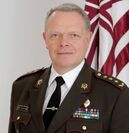
LtGen. Valdemārs Graube, Latvian Land Forces
LtGen. Valdemārs Graube
Graube was a commander of Latvian Land Forces who led the 1st Land Forces Brigade in the defense of Northastern Latvia. The famous raid on Pskov Airbase by Estonian elite Kuperjanov Infantry Battalion under Col. Killi was largely made possible by a diversionary attack of the 1st Land Forces Brigade towards Russian-held Alūksne, which drew the majority of the present Russian forces away to repel it. The operation was a resounding success, resulting in significant weakening of Russian air power in the region, the dispersal of their forces to reinforce against any such future incursions, and the eventual collapse of the frontline that followed the arrival of NATO reinforcements two days later. Despite having contributed more to devising the plan for the joint operation than Col. Killi had, Graube was later given no credit for the operation's success despite the heavy casualties his men suffered, and consequently remained embittered and hostile towards Col. Killi for the rest of his life, regarding him as a glory hound stealing more credit than was his due even while recognizing him as a highly-capable commander. Graube established the safe-zones of Alūksne, Sigulda, Valmiera, Cēsis, Balvi and Rūjiena.

Gen. Normunds Kalniņš, Latvian National Guard
Gen. Normunds Kalniņš
Commanded Zemessardze (Latvian National Guard) at the outbreak of the war. Despite being pushed back almost to the outskirts of Riga at first, the guardsmen and soldiers under his command were able to make an organized fighting retreat and conduct the vital delaying action needed for NATO reinforcements to arrive. Despite this commendable effort, and his troops seizing the initiative and driving the enemy out of their country once NATO allies arrived to reinforce them, Kalniņš is a somewhat controversial figure in the present day, even among Balts. Oft referred to as "Father of the Nation", Kalniņš is known for having devised the safe-zone system, establishing concentrated, easily-defensible communities in sheltered key locations, and maintaining them at any cost, including at the expense of other surviving compatriots. He is likewise notorious for being the first to suggest the compulsory imposition of eugenics upon the survivors, a necessity reluctantly recognized by most of his peers and subordinates alike. Kalniņš is likewise remembered for his heavy-handed policies in managing the safe-zones under his command, introducing penalties like summary execution for theft of supplies and later outlawry. His perhaps most infamous, if relatively unknown deed, is the no-prisoners order during the infamous raid on Pitalovo (Abrene) in 2057, even though the extent of his knowledge and involvement of the following massacre is highly debatable. He is credited with the establishment of safe-zones over much of Eastern Latvia, such as Madona, Rēzekne, Daugavpils, Krāslava, Ludza, Preiļi, Aizkraukle and Ludza, and notoriously, Abrene. Kalniņš served on the Council of Generals, and narrowly fell short of being elected High Marshal, losing to Gen. Terras solely because of the unpopularity of his heavy-handed measures with the people. In the present day, Gen. Kalniņš is viewed as a highly-competent and capable leader unafraid to make tough and unpopular decisions, his more controversial actions and policies being justified by the harsh realities of their time. Many of them are still effective today, if in considerably milder forms.

Col. Sandis Lejiņš, Latvian Land Forces
Col. Sandis Lejiņš
Operated mainly in Western Latvia for the duration of the Great War. Responsible for managing the training facilities for new recruits, he was intimately familiar with the process of military training on all levels. Himself a former Latvian Special Forces operator and one-time commander of the Special Tasks Unit, Lejiņš was also intimately familiar with the training and workings of special forces. This expertise would prove invaluable for the establishment of the four-tier system that would come to define the future Baltic Union society at large. While Lejiņš is primarily remembered for the establishment of Western Latvian safe-zones in Skrunda, Saldus, Kuldīga, Talsi, Jelgava and Tukums, he is also less widely known as the father of Tier One in particular along with British SAS Major James Wilson.
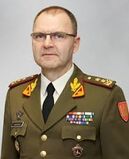
LtGen. Arūnas Jankus, Lithuanian Army
LtGen. Arūnas Jankus
A Lithuanian Army general notable for his command of the Geležinis Vilkas (Iron Wolf) Armored Brigade. Faced with impossible odds while trying to hold the Suwalki Corridor open in the early hours of the war, Iron Wolf brigade was almost annihilated along with three Polish armored brigades even before the bombs fell. The few survivors from Lithuanian and Polish units rallied under Jankus' command and were understandably embittered and distrustful of any and all foreigners whom they blamed on their losses and the destruction inflicted on their country. Although hostile to Russian and former NATO forces alike, the remnants of Iron Wolf Brigade were too few in number and too short of supplies to pose a significant challenge to other forces stationed in the region, such as the Bundeswehr Panzerbrigade under BdGen. Domrose that had arrived to relieve them just before the Exchange. After setting themselves up in abandoned Soviet-era military bases with at least somewhat adequate fallout shelters and subsisting on hit-and-run raids on civilian communities during first two years nuclear winter, the ad-hoc armored militia of Jankus had attracted enough unhealthy attention from the nascent Union government to be besieged by a much larger and better-equipped force and given a choice between integration and annihilation. Reluctantly, Jankus and his men chose to be integrated. Initially serving as a subordinate to BdGen. Domrose, Jankus soon rose to prominence as Domrose felt that a native Lithuanian would serve better to represent him than any German officer, especially given the long historical animosity between Lithuanians and Germans. Jankus would consequently grow to be seen as a representative of the emergent Union power and authority in general by the Eastern Lithuanian communities of survivors, being the founder of Kaunas and Vilnius safe-zones and eventually becoming the first Governor-Colonel of Vilnius. He would also serve two terms on the Council of Generals.

Col. Valdis Vieščūnas, Lithuanian Air Force
Col. Valdis Vieščunas
Col. Vieščunas became more notable as a builder and administrator than a soldier. After the nuclear destruction of Siauliai Airbase, his forces were reduced to little more than a handful of Skyrangers, helicopters and 1980's-era fighter jets scattered among auxiliary landing sites across Lithuania. While they clearly had their uses during the following unification campaigns, Vieščunas and his troops were nowhere near as well-equipped as LtCol. Ortega's troops, the deficit of spare parts and fuel being even more acute to his forces than it was to Ortega, who at least had enough surviving aircraft to cannibalize for spare parts at her possession. However, where Ortega and her men provided the air power, Vieščunas instead provided the infrastructure and supplies. Possessed with a great diplomatic talent, Vieščunas found himself able to broker agreements and encourage cooperation even between commanders who saw themselves as rivals. This skill allowed him to foster exchange of precious supplies between different commanders and communities, forming groundwork for the Union's later "mutual assistance" program between incorporated settlements. This way, he was able to secure enough supplies to Ortega's aviators to keep them operational through the nuclear winter and the first hardest years afterwards, as well as procuring other precious supplies for other commanders, securing himself a reputation as a valuable middleman especially in the first years when trust between different groups was still marginal. Vieščunas also contributed greatly to the restoration of Mažeikiai oil refinery complex to operation, partly repurposing it to process plastic garbage into fuel, the reconstruction of Siauliai Airbase and several other airfields in Panevežys, Biržiai and Telšiai along with the corresponding safe-zones. He served as the Union's leading diplomat during its early years, most importantly securing formal recognition of the Union's sovereignity by Old Nations and the Commonwealth.
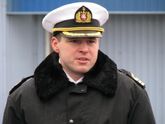
RAdm. Petras Oleskievičus, Lithuanian Navy
RAdm. Petras Oleskievičus
Lithuania had the least significant naval assets of the three Baltic nations to command, but they were no less useful to the Union for that. Although smaller than the other two national navies, Lithuanian Navy prided itself on Mindaugas, the only proper guided-missile destroyer and the largest ship in all three Baltic navies. Mindaugas, under command of Oleskievičus, was kept in reserve during the early Great War out of government concern of losing their most formidable naval asset early on, instead patrolling Lithuanian waters off Klaipeda and Palanga in an air-defense and ASW role. It narrowly escaped destruction during the Exchange, and would eventually become the first flagship of the Baltic Union Navy. While essentially confined to its existing stocks of weapons in an ever-deteriorating condition, neither the union nor most other powers of the time having the means to manufacture replacements, Mindaugas still made for a formidable presence in the post-war Baltic Sea. Rear Admiral Oleskievičus and his mighty ship provided the means of travel for High Marshal Terras and his retinue on a number of their expeditions to the outside world, travelling as far as the Persian Gulf and Guinea Coast. Under Oleskievičus, Mindaugas would fight in numerous engagements with pirates and other hostiles, her most memorable engagement being a victory over a surviving rogue Russian nuclear submarine reportedly still carrying nuclear weapons in the Norwegian Sea. Petras Oleskievičus established the safe-zones of Klaipeda and Palanga. In his later years, he was promoted to full Admiral, served a term on the Council of Generals, and met a somewhat inglorious end along with his ship in 2079 when Mindaugas struck a drifting wartime mine just 20 nautical miles off the coast of Lithuania. The accounts as to how exactly the Admiral perished vary, but all agree that he remained voluntarily aboard up to the last moment, ensuring that all of his men evacuated safely and in the end going down with his ship in the best naval traditions. Several schools and and youth training camps across the Union are named in his honour.
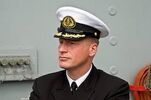
Adm. Kārlis Roze, Latvian Navy.
Adm. Kārlis Roze
Admiral of Latvian Navy. Although Latvian Navy assumed a relatively passive role in the early Great War (at least compared to Estonian Navy), they were by no means idle bystanders in the conflict. Traditionally specializing in minesweeping, Latvian Navy ships were vital to clearing the seaways for the NATO fleet battlegroups and their attending supply ships from Russian mining efforts. Admiral Roze had a reputation of an innovator, staunchly advocating modernization and expansion of Latvian Navy as well as advocating a merge of the three Baltic navies for enhanced power and capabilities. He is credited with conceiving the Manta and Delfin classes of submersible attack boats presently in use by the Baltic Union Navy, although the Union did not develop the industrial capacity to construct such craft in his lifetime. After the Exchange, he established the safe-zones of Liepāja, Pāvilosta, Ventspils, Mazirbe and Roja. His flotilla of ships would acquire a somewhat controversial reputation in the post-war Baltic Sea, both protecting Union communities from the depredations of pirates and also launching raids on rival or unaffiliated communities to procure scarce resources.
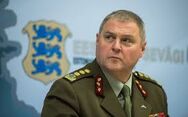
Gen. Eino Terras, Estonian Kaitseliit
Gen. Eino Terras
An Estonian Kaitseliit (Estonian National Guard) general. Participated in the defense of Narva in the opening hours of the war, Terras and his troops were unable to resist the enduring Russian assault and made a fighting retreat towards Tallinn, delaying the enemy in a series of pre-planned defensive lines while NATO and Russian navies wrestled for control of the Baltic Sea. By the time NATO was finally able to send in aid from the sea, his forces were on the brink of collapse, exhausted and heavily outnumbered in a desperate last stand in the outskirts of Tallinn. Once the USMC 2nd Marine Division landed to reinforce them and NATO forces regained initiative, Terras' forces assumed a rearguard role, mopping up Russian stragglers and protecting NATO supply lines from sabotage and diversion. After the Exchange, Terras established the Narva, Rakvere and Tallinn safe zones. He was the first Baltic leader to be elected High Marshal of the Union, and is remembered for his many expeditions to reestablish contact with the outside world during his tenure, going as far as Iran and West Africa.
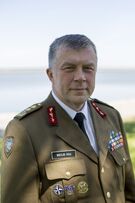
Col. Meeus Killi, Estonian Kaitseliit
Col. Meeus Killi
Estonian Land Forces. Originally a commander of the elite Kuperjanov Infantry Battalion, Killi's troops and their attached Kaitseliit elements saw heavy action in Southeastern Estonia during the opening hours of the war. He is particularly famous for his daring raid on the airbase near Pskov once the Russian forces were distracted by incoming NATO reinforcements. Although the raid failed to effect the desired levels of destruction of the airbase (which was later overrun by advancing NATO forces anyway) and Killi's troops suffered heavy casualties, the raid is believed to have been instrumental in reducing Russian air power in this region sufficiently for the frontline to collapse under continued NATO pressure. After the Exchange, he established the safe zones of Tartu, Voru, Valga/Valka and Viljandi. Also served a term as High Marshal of the Union. It is believed that Killi was also instrumental in establishing the Tier One training protocols.
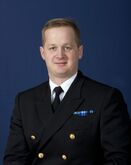
Com. Joosep Saska, Estonian Navy
Com. Joosep Saska
An Estonian Navy commander. Initially in command of Lembit, the first guided-missile frigate of the Estonian Navy, Saska soon found himself out of work after his ship was sunk in Gulf of Finland in the opening hours of the all-out ground war against Russia in Europe. After NATO naval forces defeated the Russian Baltic Fleet and blockaded the remnants in Kronstadt harbor where they were protected by extensive air defenses, Saska was promoted to acting Rear Admiral and granted command of a flotilla of supply ships to keep the blockading force supplied. After the Exchange, he would put this flotilla to use, running the scarce supplies to isolated island communities in Moonsund archipelago and evacuating survivors from untenable locations. He is consequently remembered as the founder of the safe zones of Paldiski, Kuresaare and Kardla.

Col. Andrew T. Walcroft, USMC
Col. Andrew Tiberius Walcroft
Hailing from 2nd Marine Division of the USMC, Colonel Walcroft is the most prominent Western commander among the founding fathers of the Baltic Union. When the majority of the 2nd Marine Division was annihilated by nuclear bombardment in the outskirts of St. Petersburg, Walcroft assumed command over the remnants stationed in the Baltics, mostly rearguard elements and battered combat units on R&R. Guided by the plight of the native residents in the aftermath of the Exchange and his own reservations about the USPG government, Walcroft ignored the orders of Moorehead (and later Schulte) to withdraw back to Western Europe, and instead chose to invest the still-significant USMC resources in the Baltics to help the locals survive the coming nuclear winter. Walcroft is the only Western commander to be elected to the Council of Generals after the foundation of Baltic Union, and is widely considered the most prominent Western Colonel in the present day.

LtCol. Alejandra Ortega, Spanish Air Force
LtCol. Alejandra Ortega
Ortega commanded an SPAF reserve unit consisting mainly of helicopters and VTOLs stationed in secondary airfields in Western Latvia at the time of the Exchange, which contributed to their survival as the major airfields were annihilated by Russian nuclear strikes. In the aftermath, she found herself in command of the only significant air power remaining in the region. Although air travel was notoriously difficult during the years of nuclear winter, hampered by extreme weather, radiation and chronic shortages of fuel and spare parts, effectively limiting it to short-range low-altitude flights, Ortega's unit was nonetheless instrumental in reuniting the scattered communities of survivors in the years to come. A number of Skyrangers from her unit are still in service almost 80 years later, being meticulously kept in order and constantly upgraded by contemporary Baltic airmen, a number of whom are descendants of Ortega's original troops. Ortega also has the distinction of being the only female commander among the original Colonels.
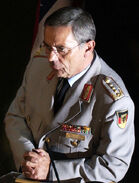
BdGen. Hans L. Domrose, Bundeswehr
BdeGen. Hans Lothar Domrose
Originally the commander of the 41st Panzergrenadier Brigade, Domrose assumed command over most surviving Bundeswehr elements in Southern Lithuania and Belarus after the Exchange. Although technically the highest-ranking Western officer in the Baltics at the time, Domrose ultimately elected to support Col. Walcroft - while he had the most men and vehicles at his disposal, Walcroft controlled much of the surviving NATO supply depots. Among Domrose's charges were several combat support and engineering units including the largest CBRN unit present in the Baltics. Their equipment and skills in particular became invaluable after the fallout settled, allowing to clear and rebuild infrastructure in the heavily-contaminated Southern Lithuania where the majority of Domrose's forces were stationed. In the present day, Domrose is remembered chiefly as the (re)founder of Alytus safe-zone, the only major settlement south of Neman River in the area today known as the Southern Reclamation Zone.
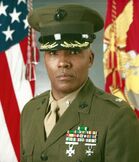
Col. Malcolm F. Jackson, USMC
Col. Malcolm Francis "Black Jack" Jackson
Commander of the 8th Marine Regiment, is remembered in no small part over his rivalry with Col. Walcroft, first over command of the remnants of the 2nd Marine Division, and later over Walcroft's refusal to heed the orders of USPG and NATO remants to withdraw from Eastern Europe. This feud would at times devolve as far as minor skirmishes between units supporting the respective commanders. Eventually, however, Jackson became convinced that his skills and resources would be much better spent helping the locals in the Baltics rather than helping "warlord Schulte" prop up his military dictatorship in Western Europe. Nicknamed "Black Jack" by the native residents because of his ethnicity, Jackson is remembered chiefly for his campaign to restore law and order in the bandit-ravaged post-war Riga. In his later years, Jackson would serve as the Governor-Colonel of Riga, proving himself an equally capable administrator. The older residents of the city still remember fondly the tenure of their endeared Black Jack.

Maj. James Wilson, SAS
Maj. James Wilson
Commander of A Squadron, 22 SAS, was deploying to Russia at the time of the Exchange. Like countless others, his entire unit remained unaccounted-for in the post-Exchange chaos and presumed killed in action. Stuck in the Baltics with no realistic means of returning home, A Squadron found a new calling in protecting the local civilians from the depredations of bandits, rogue militias and more often than not also rogue elements of NATO forces. It didn't take long for their activities to be noticed by the commanders of the nascent Union's safe-zones, Maj. Wilson and his men consequently being offered a place suiting their unique brand of skills. Although little further information is publicly available on Wilson and his men or their activities after joining the emergent Union's forces, it is widely (and presumably correctly) believed that he was instrumental in establishing the famed Tier One.
